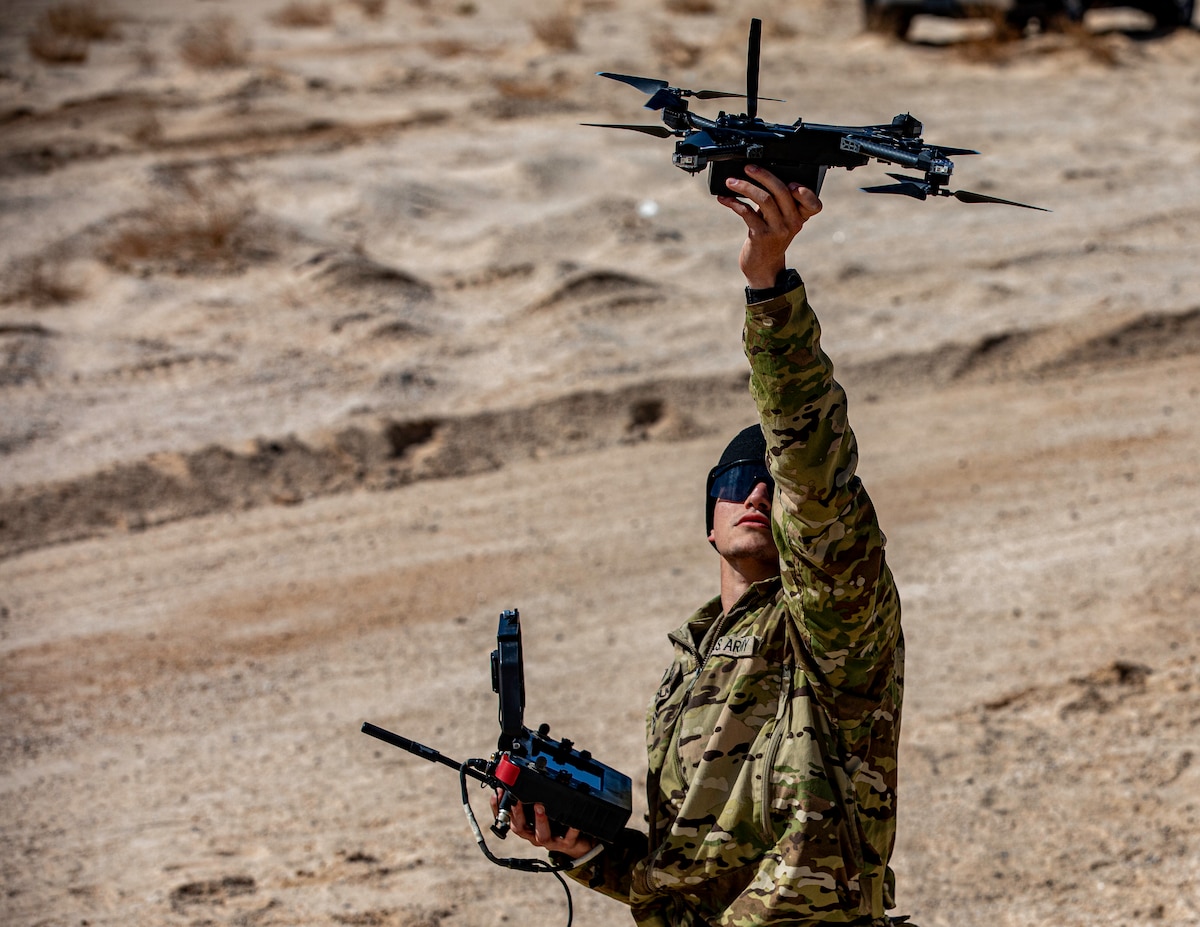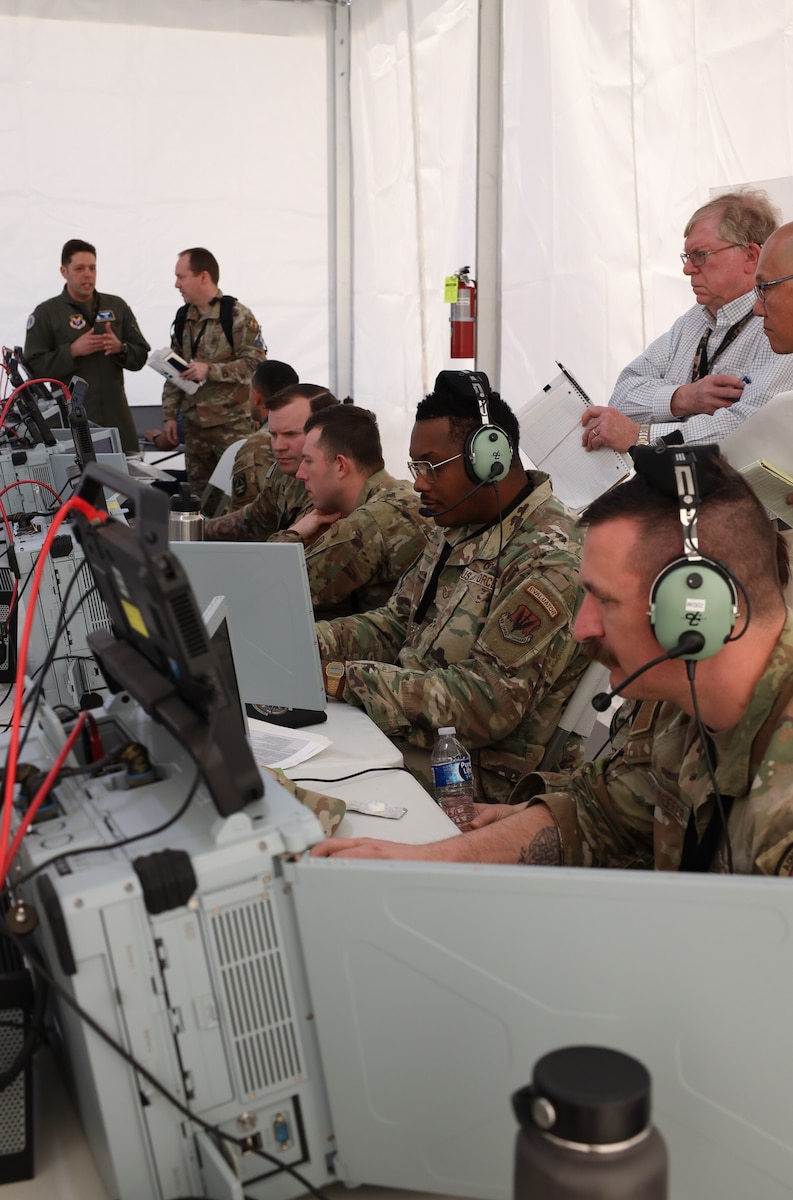The Air Force is demonstrating its commitment to joint warfighting capabilities, integrating airpower into a vast network of sensors and shooters during Project Convergence Capstone 5, a large-scale military modernization experiment held amidst the desolate California desert, the Shadow Operations Center-Nellis Air Force Base, Nevada, and other locations February through April.
Project Convergence Capstone 5, hosted by Army Futures Command, serves as a vital experimentation ground for the future of warfare. It focuses on the continued integration of joint and multi-national layered air and missile defense systems. The Air Force Futures Directorate is the primary organization responsible for the Air Force contributions to the Army's large force experiment. The event brings together forces from the Air Force, Space Force, Air National Guard, Army, Navy, Marine Corps and coalition partners from the United Kingdom, Australia, Canada, New Zealand, France and Japan.
"We are in the middle of a generational evolution when it comes to developing operational concepts, fielding technologies, and pursuing new levels of force integration," said Lt. Gen. Dave Harris, deputy chief of staff for Air Force Futures. "These events are critical as we develop and deliver capabilities for the joint force that provide decision advantages that keep the U.S. well ahead of the threat."
A key program for the experiment is the continued development of the Tactical Operations Center-Light Major Release 1, a program managed by the Department of the Air Force Program Executive Office for Command, Control, Communications and Battle Management. Airmen used the system to refine integration with joint force systems, including Palantir's AI-driven Maven Smart System and the System-of Systems Technology Integration Tool Chain.
"PC-C5 brings multiple agencies together, allowing us to integrate diverse software and applications into a unified operating picture and troubleshoot systems like the TOC-L," said Tech. Sgt. Timothy Keefer, a weapons and tactics flight chief for the 752nd Operations Support Squadron, and acting as the advanced Joint Interface Control Center operator for the experiment. "Legacy systems offer some mobility, but not agility. The TOC-L moves us toward both, which is essential for future battlefields."
PC-C5 serves as a crucial operational venue for data-gathering, providing valuable insights into the effectiveness of these programs within the DAF BATTLE NETWORK, the Air Force's contribution to Combined Joint All Domain Command and Control. Air Force Futures creates the Air Force's strategy across multiple time epochs, develops the corresponding force design, and advocates for the necessary requirements to ensure the Air Force possesses the capabilities to deter, and if required, defeat strategic competitors. Their Advanced Battle Management System Cross Functional Team is leading the planning, management and execution of Air Force support to PC-C5.
The Air Force Operational Test and Evaluation Center is leading the Air Force's campaign of learning during the experiment.
"We're focused on delivering valuable data to senior leaders - data about both the systems and their human operators," said Kristopher Looney, AFOTEC's Experimentation Directorate director. "System data reveals precisely how operators and technology interact, highlighting successes and failures. Directly interviewing operators provides crucial context, helping us understand why things worked or didn't."
The shift from traditional, siloed testing to collaborative development in a real-world environment is central to the Air Force's modernization strategy. Project Convergence embodies this approach, allowing for rapid iteration and feedback loops that accelerate the development and refinement of tactics, techniques and procedures for multi-domain operations.
"We use mission threads focused on shortening the kill chain," said Tech. Sgt. Jeylend Kitchen, lead non-commissioned officer in charge of group evaluations for the 552nd Air Control Group and acting as the weapons director for the experiment. "Current mission threads involve extensive communication to verify information, which can create delays. We aim to automate this process, enhancing decision advantage. AI-enabled software like STITCHES and MSS helps ensure operators have accurate, readily available information based on established TTPs."
PC-C5 demonstrated the TOC-L MR1's interoperability with Army command and control systems and other joint assets, a key aspect of the DAF BATTLE NETWORK, the systems-of-systems that provides resilient decision advantage.
"This experiment continues to show us the critical importance of human-machine teaming within the CJADC2 structure," said Army Chief Warrant Officer 3 Matthew Middlebrooks, a member of the Army's cross functional team for the 108th Air Defense Artillery Brigade and acting as a JICC operator for the experiment. "While we've made strides in system integration, we must equally prioritize training and procedures that optimize human-machine teaming. This experiment allows us to observe our procedures in action, identifying areas for refinement and gain a clear understanding of the joint air and ground defense picture."
The lessons learned from PC-C5 will directly inform future readiness and modernization activities, ensuring the Air Force and its joint and coalition partners are equipped to address emerging threats. By analyzing data, refining TTPs, and identifying areas for improvement in technology, training and doctrine, the Air Force continues to evolve its capabilities to maintain its competitive edge in an increasingly complex global security environment.










